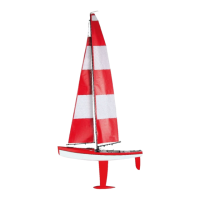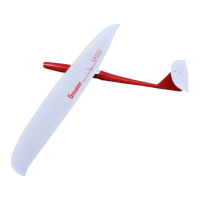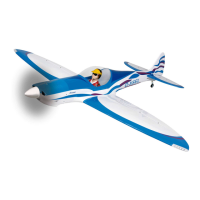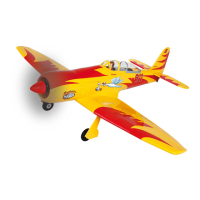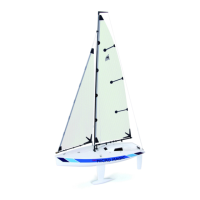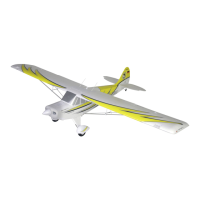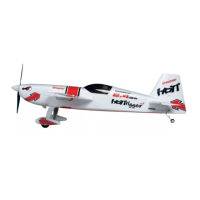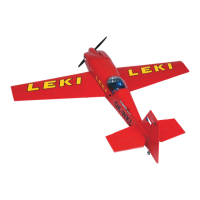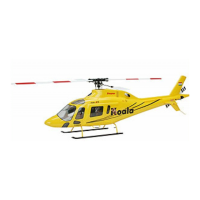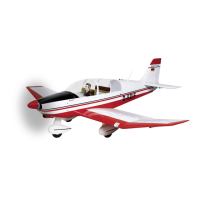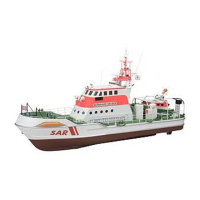4
• Keep well clear of the rotational plane of the propeller. You never know when some part
may come loose and fly off at high speed, hitting you or anybody else in the vicinity. Never
touch the revolving propeller with any object.
• Take care with loose clothing such as scarves, loose shirts etc. Flapping cloth can easily
be sucked into the area of the propeller and then get tangled in the blades. This is
extremely dangerous.
• If there are passers-by or spectators at your flying site, make sure that they are aware of
the dangers inherent in your activity, and insist that they keep a safe distance away (at
least 5 m).
• Radio-controlled models should only be flown in “normal” weather conditions, i.e. a
temperature range of -5° to +35° C. More extreme temperat ures can lead to changes in
battery capacity, material characteristics and other unwanted effects.
• Model fuels are toxic; do not allow them to come into contact with your eyes or mouth. Fuel
should always be stored in clearly marked containers, out of the reach of children.
• Never run an internal combustion engine in an enclosed space such as a cellar, garage etc.
Model motors produce lethal carbon monoxide gas just like full-size engines.
Motors should only be run in the open air!
• Adhesives and paints contain solvents which may be hazardous to health under certain
circumstances. Read and observe the notes and warnings supplied by the manufacturer of
these materials.
• Model fuels are volatile and highly inflammable. Keep them well away from open flames,
excessive heat, all possible sources of sparks and anything else which could result in a
fire. Do not smoke in the immediate vicinity of fuel or fuel vapours.
• Model engines generate a lot of heat. The motor and silencer in particular become very hot
when running, and stay at a high temperature for quite a while. Touching the hot parts can
give you serious burns, so take care especially when carrying out adjustments - wear
protective gloves. Hot engines can even start a fire under certain circumstances.
• When the motor is running it expels hot toxic gases from the exhaust together with very
hot fluid combustion residues which can burn you if you are not careful.
• Remove all unused fuel from the fueltank and motor after every session.
• Every time you intend to operate your model check carefully that it and everything attached
to it (e.g. propeller, linkages, control surfaces etc.) is in good condition and undamaged. If
you find a fault, do not fly the model until you have corrected it.
• Model motors are usually started with the help of an electric starter which should be fitted
with the appropriate adaptor where necessary. With fixed-wing models an alternative is to
use a “chicken stick” - a length of thick wooden dowel with a piece of water hose pushed
over it.
• Many model motors are very noisy, producing a sound level much higher than 85 dB (A),
which implies that you should wear ear defenders. Never run a motor without the silencer
fitted. Even with a silencer, model engines can easily disturb your neighbours. Don’t run
motors when other people expect peace and quiet.
• If you start your motor when the model is standing on loose or sandy ground, the propeller
will suck up sand and dust and hurl it around, and it could easily get in your eyes and do
damage. Wear protective goggles at such times.
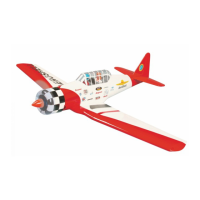
